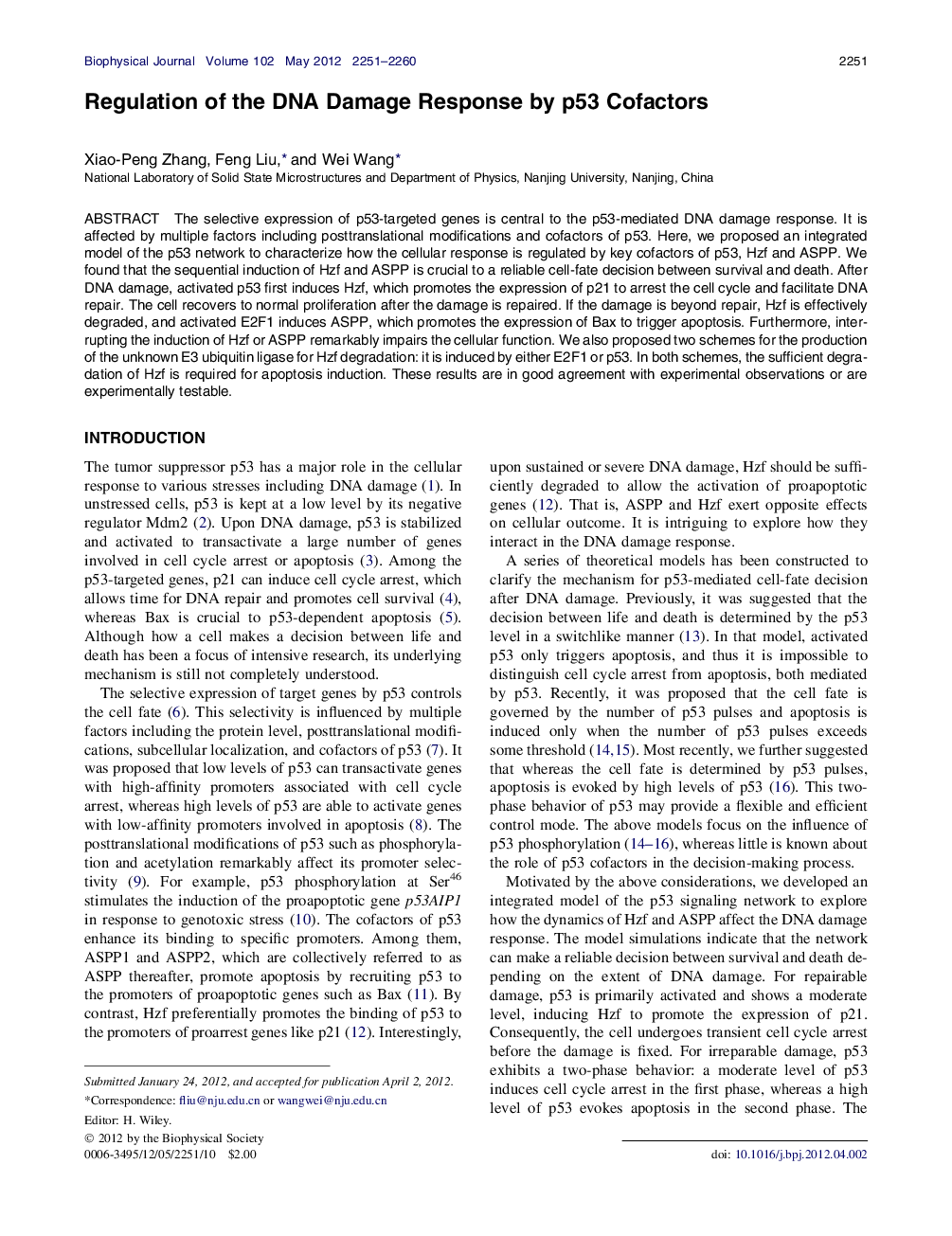| Article ID | Journal | Published Year | Pages | File Type |
|---|---|---|---|---|
| 1954542 | Biophysical Journal | 2012 | 10 Pages |
The selective expression of p53-targeted genes is central to the p53-mediated DNA damage response. It is affected by multiple factors including posttranslational modifications and cofactors of p53. Here, we proposed an integrated model of the p53 network to characterize how the cellular response is regulated by key cofactors of p53, Hzf and ASPP. We found that the sequential induction of Hzf and ASPP is crucial to a reliable cell-fate decision between survival and death. After DNA damage, activated p53 first induces Hzf, which promotes the expression of p21 to arrest the cell cycle and facilitate DNA repair. The cell recovers to normal proliferation after the damage is repaired. If the damage is beyond repair, Hzf is effectively degraded, and activated E2F1 induces ASPP, which promotes the expression of Bax to trigger apoptosis. Furthermore, interrupting the induction of Hzf or ASPP remarkably impairs the cellular function. We also proposed two schemes for the production of the unknown E3 ubiquitin ligase for Hzf degradation: it is induced by either E2F1 or p53. In both schemes, the sufficient degradation of Hzf is required for apoptosis induction. These results are in good agreement with experimental observations or are experimentally testable.
